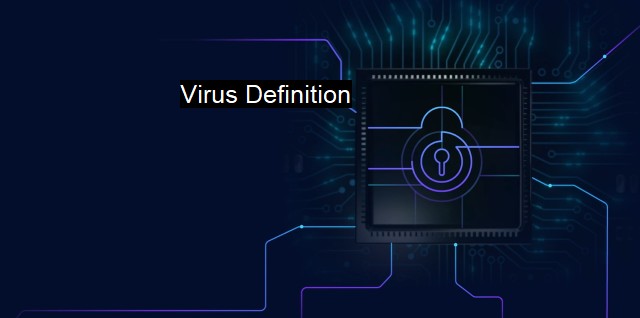What is Virus Definition?
Understanding Virus Definitions: Crucial for Cybersecurity & Antivirus Software
In the digital age with an escalating internet community, cybersecurity has emerged as a significant concern for organizations, governments, and individuals. One key area within this broad context is the understanding of "virus definition." This phrase, unified with the realms of cybersecurity and antivirus, sheds light on a complex, crucial area that requires ongoing attention from computer users and experts alike.A virus, within the lens of information technology (IT) and particularly cybersecurity, is essentially a malicious program or script that causes harm to computer systems by altering the way a computer operates without the user's meaningful consent. They are self-replicating, designed to spread from host to host and network to network. The purpose could range from stealing personal or proprietary information, causing system inefficiencies, to even completely destroying systems. This aligns with the common strain of thought that viruses bear a negative connotation since they predominantly result in unfavorable outcomes.
Delving deeper into the virus definition, computer viruses can be categorized based on how they infect the systems and the subsequent damage they cause. Some spread through emails attachments or downloaded files. Others could be piggybacking with a legitimate program installation, free software, or through P2P file sharing. Depending on their design and purpose, types of viruses include Trojans, worms, ransomware, adware, spyware, and keyloggers. Each has their unique attributes and effects Trojans masquerade as genuine software, worms replicate themselves and consume resources, ransomware locks down systems until a ransom is paid, and so on.
Viruses pose a real threat to both individuals and organizations alike, providing the necessity for antivirus and antimalware programs. The role of these software ranges from protection to detection to removal of such malicious entities. The capability to even immunize a system in advance against the damaging effects of known viruses is an essential function offered by these tools.
Antivirus applications act on the basis of using databases or libraries of known viruses and malware (often referred to as virus definitions) to effectively identify and nullify threats. Virus definitions inherently are databases of threat descriptions and a key component of antivirus systems, akin to an infectious disease registry that a hospital might rely on to manage and treat diseases. This library is continuously evolving, reaching back into archives of past viruses and stretching forward to identify and combat those emerging in real time.
Antivirus software scans computer programs and files, identifying patterns that might indicate a virus attack. While real-time, proactive virus detection is ideal, the reality is that new viruses are continuously introduced to the web. Because no sooner is a virus learned, dissected, and its solution engineered than a new variant springs up. This generates a consistent cycle of virus generation and subsequent detection techniques.
In order for an antivirus software to stay functional in protecting against the latest threats, it must routinely update its virus definition databases to arm itself with knowledge related to each recognized virus. Each time virus definitions are updated, it's akin to the antivirus learning details about a new criminal, including how they operate and how to counteract their operations.
Understanding the fundamental building blocks of a computer virus, along with its strong counterparts — notably antivirus software and updated virus definitions — is indispensable in the rapidly shifting world of cybersecurity. The viral threats are constantly evolving, and thus, so must our techniques in combatting them. With good practices, updated software, and a keen alertness to potential threats, many of the risks posed by these insidious digital threats can be mitigated, and, in many cases, completely bypassed.

Virus Definition FAQs
What is a virus definition?
A virus definition is a set of rules that antivirus software uses to identify and detect malicious code, viruses, and other types of malware.How are virus definitions updated?
Virus definitions are updated regularly by the antivirus software providers. The updates are typically released to keep up with new malware threats and to improve the software’s ability to catch and remove them.What happens if antivirus software does not have the latest virus definitions?
If antivirus software does not have the latest virus definitions, it may not be able to recognize and detect new malware threats. This leaves your computer vulnerable to attack and infection. It is essential to keep your antivirus software updated regularly to ensure the best protection.Can virus definitions be customized?
Some antivirus software providers offer the ability to create custom virus definitions. This allows users to specify which files or folders should be excluded from scans, or to add specific malware signatures that may not be included in the standard virus definitions.| | A | | | B | | | C | | | D | | | E | | | F | | | G | | | H | | | I | | | J | | | K | | | L | | | M | |
| | N | | | O | | | P | | | Q | | | R | | | S | | | T | | | U | | | V | | | W | | | X | | | Y | | | Z | |
| | 1 | | | 2 | | | 3 | | | 4 | | | 7 | | | 8 | | |||||||